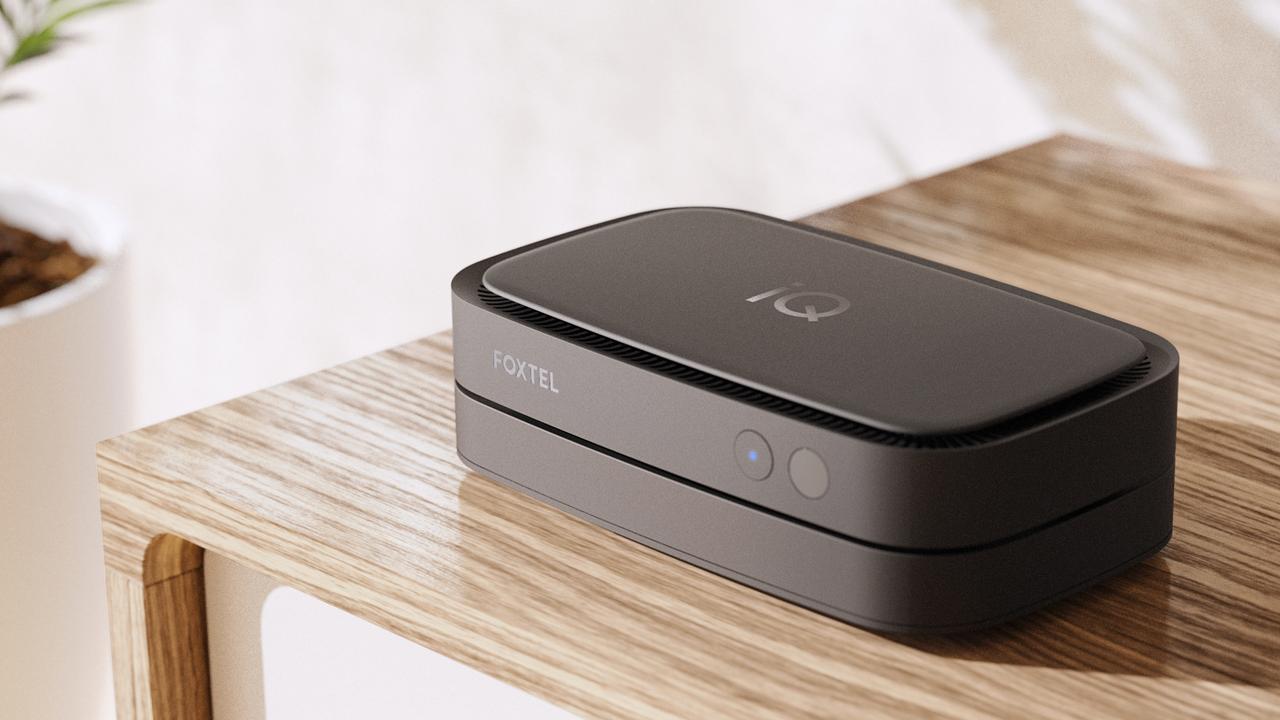Foxtel’s new iQ5 box without a cable
Australia’s biggest cable TV provider will no longer require a cable connection with its latest entertainment device.
AUSTRALIA’S biggest cable TV provider has unveiled a bold plan to cut cable from its latest entertainment device, making the switch to an internet connection alone.
Foxtel will launch the significantly smaller set-top box for some customers in September before rolling it out to wider audiences later in 2021, asking them to stream channels and video on demand rather than receive broadcasts.
The change will mean pay-TV subscribers will no longer need a satellite dish installed or HFC cable connected, and analysts say the move should help the company establish itself in the streaming entertainment era.
Foxtel chief executive Patrick Delany unveiled the iQ5 set-top box, appropriately, in a streamed event on Tuesday, calling it the latest big move in the company’s transition to online entertainment.
“We’re not just satellite and this new box symbolises that shift, the iQ5,” he said.
“(We’ve made a) massive shift in the last three years, firstly in establishing Kayo and Binge. Now the second act is to really move Foxtel and its subscribers into the 21st century with fantastic streaming capability because it unlocks all the power of content but also our partners’ content.
“They’re not our enemies any more — Netflix, Amazon, Paramount+, all the free-to-air apps — they’re all coming to the box and they’ll come with a big rush.”
The iQ5 will be available in a much smaller form factor than the previous model, will be made available with an optional one terabyte hard drive and can be connected to the internet wirelessly or with an Ethernet cable.
Users will need a broadband speed of at least 12 megabits per second to stream TV shows in 4K quality, with the best quality at speeds of 18 Mbps, and show will consume about two gigabytes of data for every hour of streaming.
Existing satellite users can plug in their device to this set-top box, and those who want to watch and record free-to-air channels will also have to connect an aerial.
Mr Delany said the new internet-savvy device was simple enough to be installed by users themselves and should appeal to “people who couldn’t get cable and people who didn’t want the satellite”.
“It might bring previous subscribers back,” he said. “The main thing we are focusing on is keeping subscribers rather than getting new ones and this set-top will be used to give a better experience for existing subscribers. There’s no doubt it gives people a very different experience.”
Foxtel, which is part-owned by News Corp, recently revealed it has more than 4 million subscribers, including 53 per cent who stream content.
Telsyte managing director Foad Fadaghi said the transition to streaming rather than broadcast entertainment was a smart move for the company, although it “could have happened earlier” for some users.
“The streaming video model has been proven as the segment of the market that is growing in pay-TV so it makes a lot of sense for Foxtel to follow this path,” Mr Fadaghi said.
“It could have happened earlier but this is the best way for them to address the streaming entertainment opportunity.”
For all the latest Technology News Click Here

